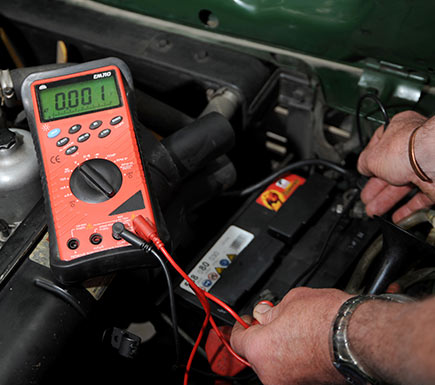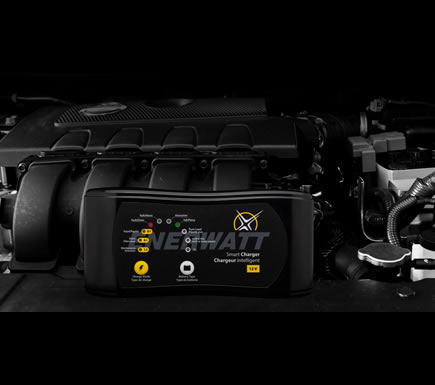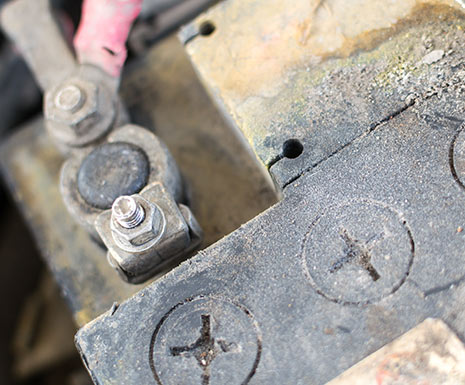Why does my battery discharge?
A battery is an active material... much like you! If you stay seated on a chair, it is true that you conserve more energy than when you are engaging in physical activity. However, the simple act of breathing is an action that causes an energy decrease. In the world of batteries, this phenomenon is called self-discharge.
What is self-discharge?
Self-discharge is not a manufacturing defect, but a phenomenon inherent to batteries that is associated with capacity loss during storage, caused by the internal leakage that occurs between the positive and negative plates of the battery. It may happen that the battery is discharged to the point where it can no longer provide usable voltage.
Hence the importance of respecting the discharge capacity of the battery and recharging it when it reaches a depth of discharge (DOD) of 50%. This is especially true for a battery in storage, which is at risk of staying flat if you neglect to keep it healthy, meaning well charged!


What does a battery in storage mean?
A battery in storage can be synonymous with a battery that is seldom used. Here are some examples:
- A battery in a store waiting for your purchase - At Batteries Expert, we perform periodic charge rotation to ensure we offer you a healthy battery!
- The battery of a seasonal application that remains unused for several months – RV, ATV, motorcycle, boat, lawn mower, golf cart, etc.
- The battery of a vehicle that travels very few miles during use and remains stationary for a considerable period.
How to know if my battery needs to be recharged?
The self-discharge rate varies depending on the type and design of the battery, its age, and the temperature it is exposed to over a period of time. The daily self-discharge rate of a conventional battery is typically between 0.5% and 1%. Some types of batteries, such as AGM (Absorbent Glass Mat) batteries, have a lower self-discharge rate and retain their energy longer.
Checking the charge status of your battery will tell you if it needs a recharge. Checking the charge status of your battery is simple and quick with the use of a hydrometer (also called a densimeter) or a voltmeter.
*A conventional starting battery at rest (storage) is at 100% charge when it shows a voltage of 12.65 V.

How often should I check the charge status of my battery in storage?
We recommend performing a check and maintenance recharge every three months. However, keep in mind that as a battery ages, its self-discharge rate increases. This is why it is important to perform a maintenance recharge more frequently, using a charger designed for your battery type and application.
Consult your expert at the nearest Batteries Expert store so they can guide you to the appropriate battery checker and charger for your needs. You can also click on the following link to check the quick advice "How to choose the right charger."


What will happen to my battery if I don't recharge it?
You have probably already heard the term "sulfated battery"! Indeed, leaving a battery to discharge can damage it due to the phenomenon of sulfation. During discharge, lead sulfate forms on the positive and negative plates of the battery. When the battery discharges too deeply, the concentration of sulfuric acid in the electrolyte weakens, causing the lead sulfate to crystallize on the plates instead of remaining in solution in the electrolyte, which affects the battery's recharging efficiency.
Here are some examples of conditions that can lead to sulfation of your battery:
- Incomplete charging of your battery on a regular basis.
- Low concentration of sulfuric acid in your battery's electrolyte.
- Storing your battery at a low voltage for an extended period.
*For sure, sulfation of a battery reduces its lifespan!
If I keep my battery in good health, well charged... how long will it last?
Keeping your battery well charged will maximize its lifespan and prevent premature failure. Maximizing your battery's lifespan means performing proper maintenance charging to keep it active and ready for use when you need it throughout its expected lifespan.
Each type of battery has an approximate number of life cycles, considering regular maintenance, depending on the type of battery and its design. Once the battery has reached the end of its life... even the best charger won't be able to help!

How to Store a Battery?
How to Store a Battery for the Fall?
Is it time to put away your motorcycle, RV, or marine vehicle? How will you take care of your battery? Should you remove the battery from the vehicle? Store it in a warm place? Or just disconnect the connectors? These are some of the most frequently asked questions. In the end, your battery only needs one thing: to be full of energy!
Can a Battery Withstand -60°C?
Whether it's a car battery, a powersports battery, or an RV battery, it can withstand extreme temperatures if properly charged. A 12-volt battery, when maintained above 12.6 volts, can endure temperatures as low as -60°C. However, if it is discharged to 12.20 volts or lower, it can freeze at just -20°C (a common temperature in our beautiful region). A frozen battery is rarely recoverable.
Yes, but What If I Keep My Battery Warm?
When a battery is stored, it loses a small charge each day, around 0.5 to 1% per day, even if nothing is connected. After about three months, the battery will be discharged. In this state, the battery can be damaged if not recharged quickly. It may sulfate and no longer hold a charge, which is an irreversible phenomenon.
The Solution:
To counter these effects, you can:
1. Simply use a 100% automatic maintenance charger that continuously charges your battery without any risk.
2. Fully recharge the battery with a good charger every two months.










